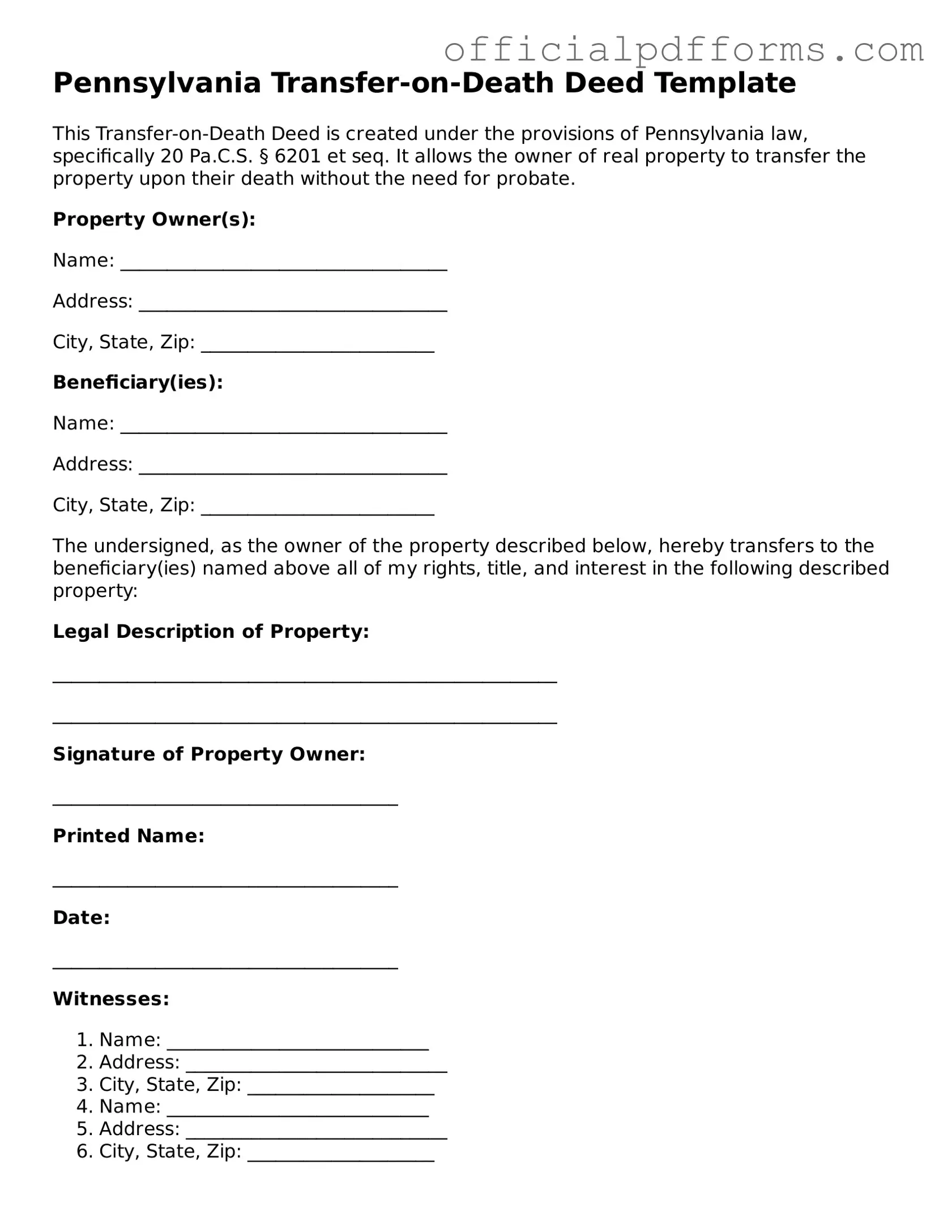Printable Pennsylvania Transfer-on-Death Deed Template
The Pennsylvania Transfer-on-Death Deed form allows property owners to designate beneficiaries who will receive their property upon the owner's death, bypassing the probate process. This legal tool provides a straightforward method for transferring real estate while retaining full ownership rights during the owner's lifetime. For those interested in ensuring a smooth transition of property, consider filling out the form by clicking the button below.
Access Form Online
